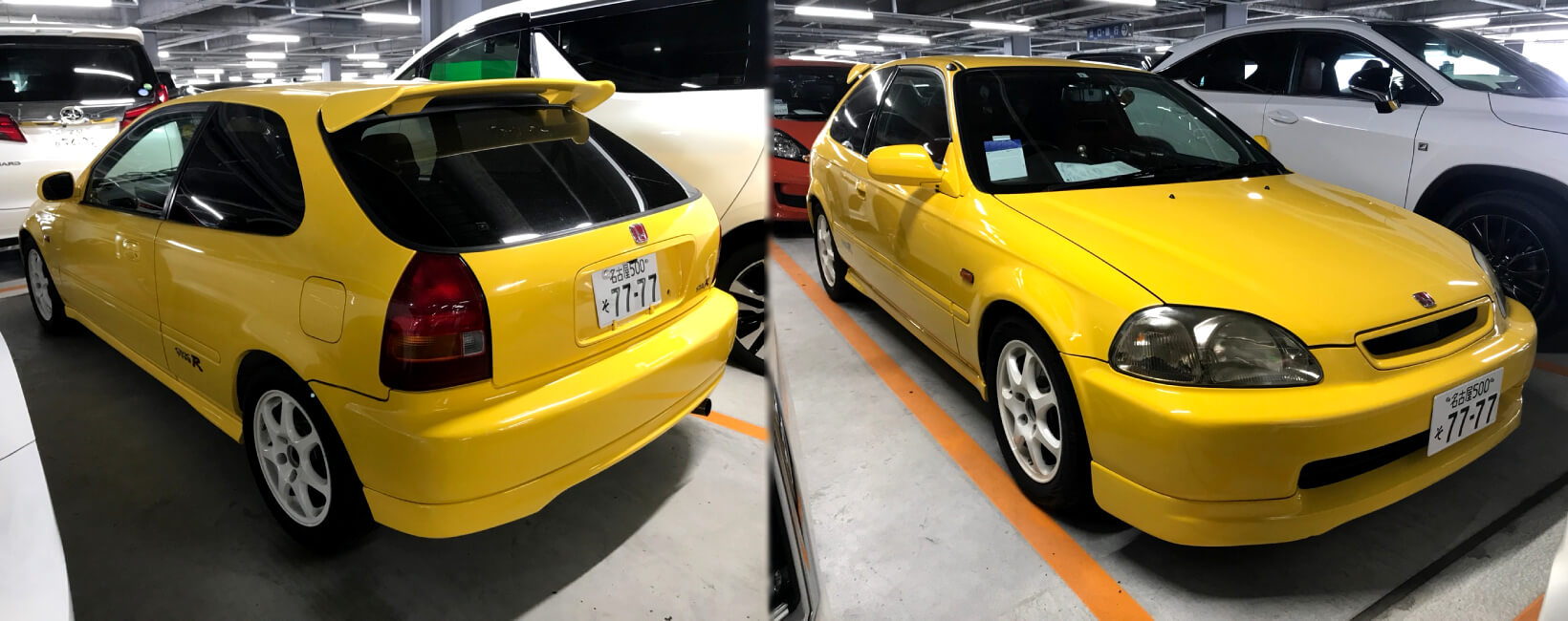What is the Civic Type-R?
Honda’s top-tier performance models have carried the “R” moniker since it was first introduced on the NSX-R in 1992. After the NSX-R, the first “Type-R” model was the Integra in 1995. Then in 1997, Honda brought the Type-R treatment to the Honda Civic hatchback, making the most practical car with a red “R” yet.
The 1997 Civic Type-R is commonly referred to as the EK9, which is the Japanese chassis code assigned to the vehicle. The transformation from an economical hatchback to a track attacking driver’s car for the street was thorough, with enhancements to the drivetrain, suspension, tires, and chassis.
The EK9 Civic was powered by Honda’s 1.6L 4-cylinder B16B engine, which produced 185 bhp (116 bhp per liter!) and revved past 8,000 RPM with ease. Honda’s famous VTEC variable vale timing system allowed for impressive power delivery without the need for turbos or superchargers. Handling was tightened up and improved in various ways on the first-generation Civic Type-R. The suspension was tuned and lowered from the standard model, providing a stiffer ride with a lower center of gravity. A torque-sensitive helical limited slip differential provided more direct power delivery that allowed the front-wheel-drive car to overcome oversteer, and larger brakes allowed for great stopping power in the light car. Additionally, there were various braces and rods installed on the chassis to improve its rigidity and thus improve handling performance.
In addition to the technical upgrades, the EK9 Type-R also received various appearance upgrades that distinguish them from standard Civics. These included red Recaro seats, special edition 5-lug wheels with 7-spokes, a MOMO steering wheel, aero body effects, and Honda’s trademark Type-R titanium shift knob. The package was incredibly tasteful and resulted in a car that is subtle enough to blend in smoothly with regular traffic, but be immediately recognizable as a special piece of Honda racing heritage.
Common Issues
Now that the EK9 has become a Japanese sportscar classic, we have been lucky enough to inspect and export quite a few over the years. Below are some of the common issues we have found on EK9 Civics. We hope this will help you in your search for a Type-R.
Please don’t hesitate to
contact us today if you would like to import your own Civic Type-R from Japan.
Rust
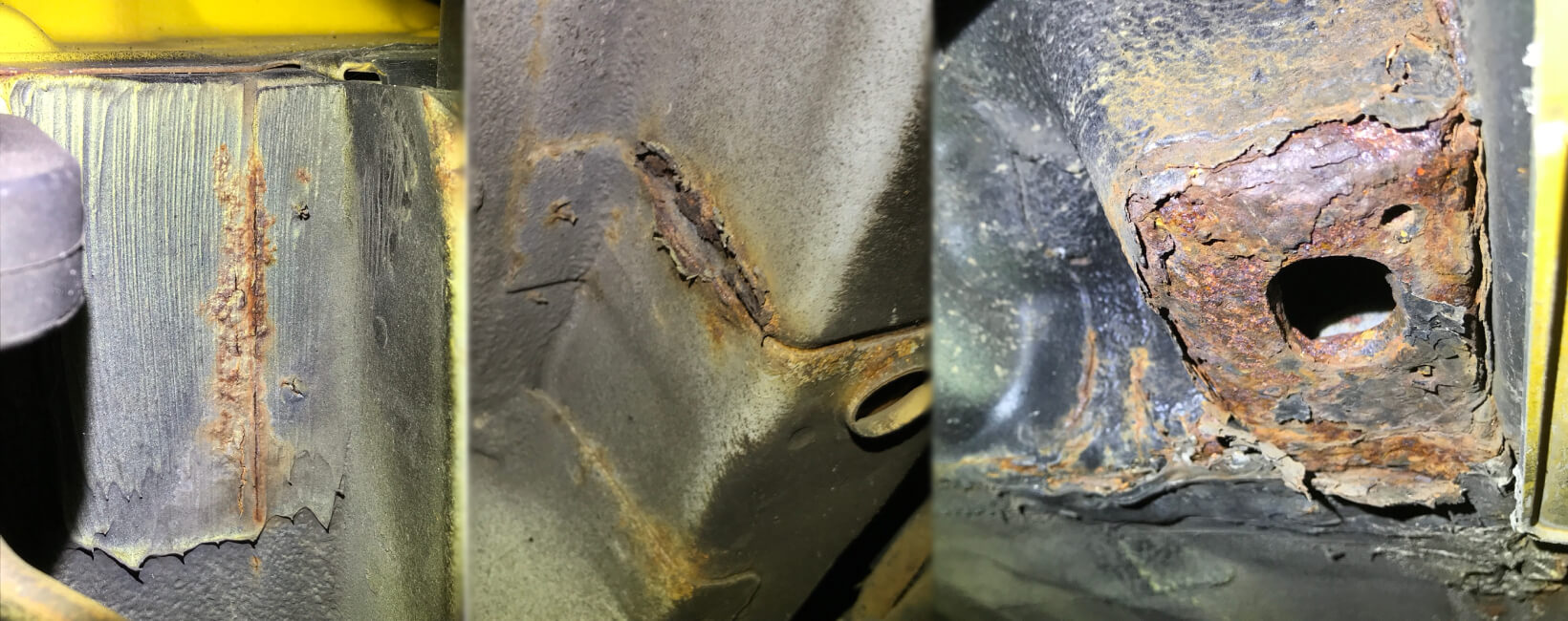
The most common issue we find when checking EK9 Type-R’s is rust and corrosion. Typically, it is found on the underside frame and suspension components. In more extreme cases it can be found on the lower floor of the rear hatch or in the engine bay. Some cars may also be painted on the underside to hide or prevent rust from further spreading. Please be sure to get a thorough check of the chassis before buying an EK9 from Japan.
Interior Wear
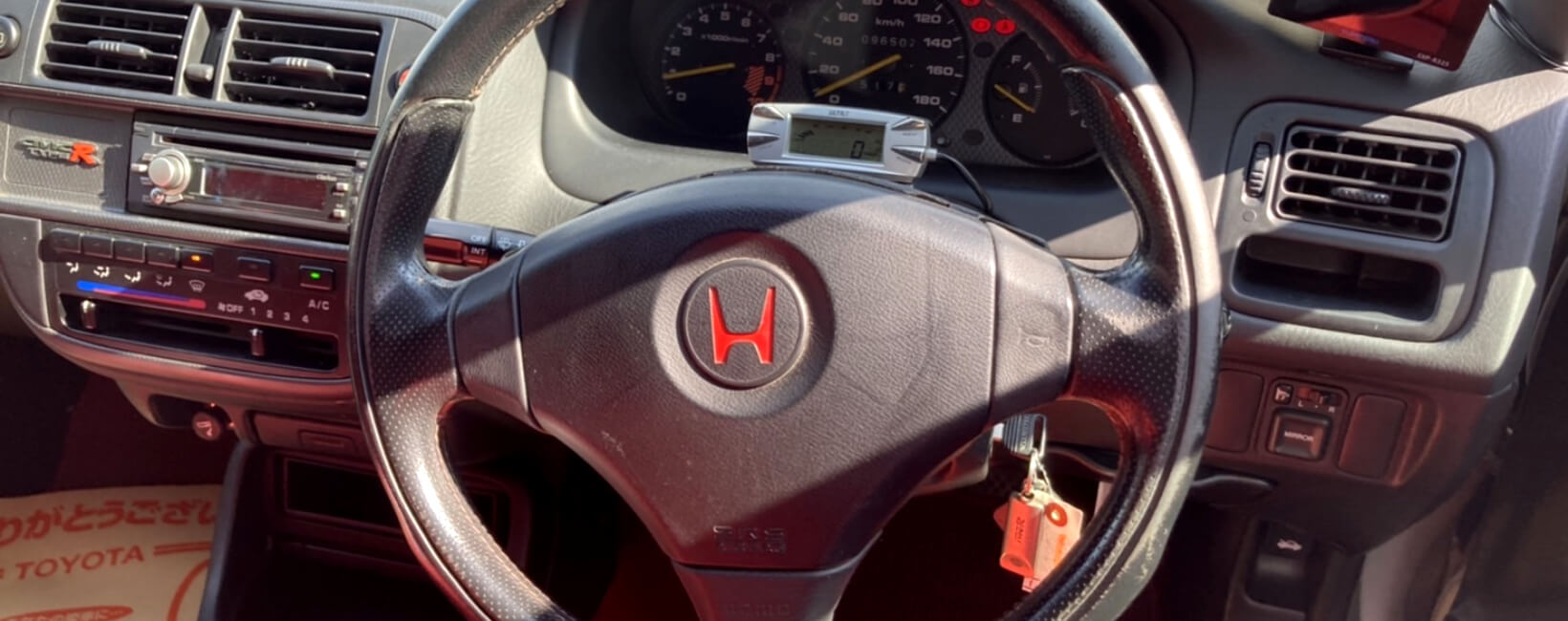
The red Recaro seats, a signature feature of the Type-R, unfortunately are commonly worn and ripped on many cars that we check. Especially the Driver’s seat from getting in and out constantly. Additionally, many EK9s have aftermarket gauges and stereo equipment installed, which can leave glue residue, rips, or holes in the dash and interior components. Luckily, these interior pieces can usually be fixed or replaced, so it doesn’t totally ruin the car. With that said, it’s best to get an inspection before purchasing one from Japan to be sure the interior is salvageable.
Engine and Drivetrain
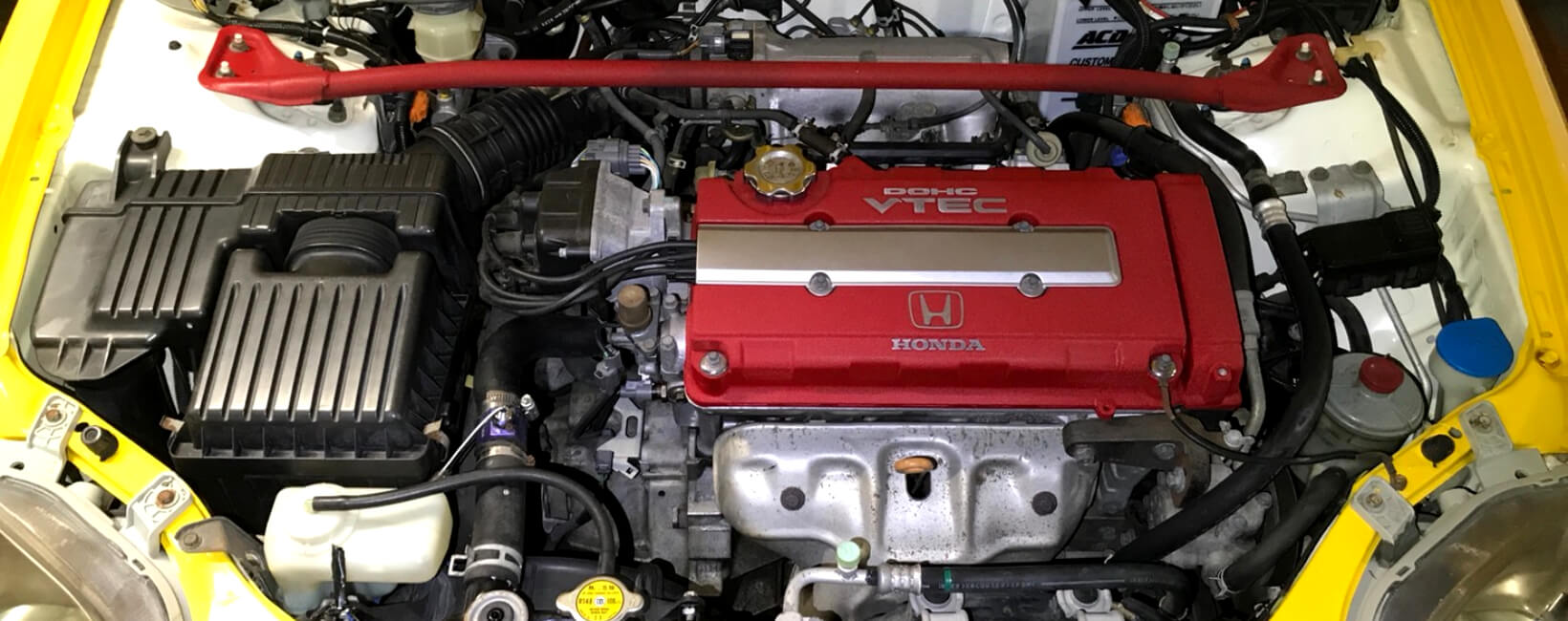
Honda has been known as a reliable engine maker for decades, and our experience in the used car business can back that up. Most of the Civics we check are in good running condition and rarely have engine oil leaking issues. Being tuner-cars that are over 20 years old, most existing Civic Type-R models have had modifications done to them over their years of ownership. While aftermarket suspension, mufflers, air filters, and such are usually no big deal, we tend to guide people away from more heavily modified units. Some EK9s can be found with aftermarket turbo-kits for additional power, which makes the reliability more questionable.
On the other hand, we have also inspected cars that have modifications from famous and reputable shops like SPOON that truly enhance the vehicle in value and experience. Always be sure that your inspector is knowledgeable of the aftermarket parts on the car and can assess if the modifications have caused any long-lasting issues to the engine that may be of concern.
Exterior Paint and Trim Wear
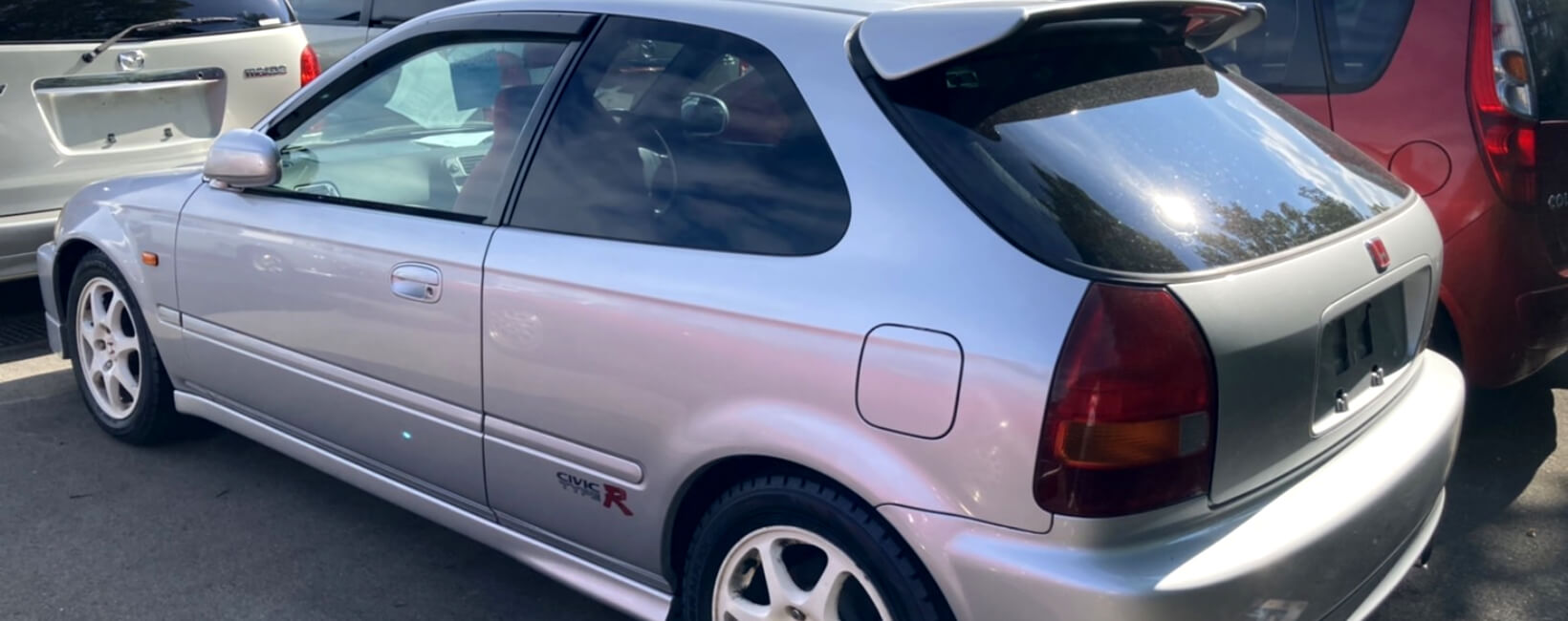
The signature color of Honda Type-R cars is white with the red-backgrounded Honda badge, which is an homage to the company’s legendary F1 cars of the 1960s. We find most of these white-painted EK9 models tend to lose their luster over the years and appear dull and chalky. Typically, this can be buffed and polished back into showroom condition with a bit of time and effort, so it is not a big issue. Additionally, many of the black trim pieces will wear and oxidize over the years and need to be replaced. Similar to the interior parts, most can be found easily and replaced or repaired.
How To Import an EK9 Honda Civic Type-R From Japan
The EK9 Civic Type-R is eligible for import to the following countries under the conditions specified below.
| Country |
Eligible Year Range |
Specific Conditions |
| Australia |
1997 to 2000 |
Must be 25 years old or more |
| Canada |
1997 to 2000 |
Must be 15 years old or more |
| New Zealand |
1997 to 2000 |
Must be 20 years old or more |
| UK |
1997 to 2000 |
Requires localization on UK side for registration |
| USA |
1997 to 2000 |
Must be 25 years old or more |
If your country is not listed above, it still may be possible to import an EK9 Type-R. Please check the regulations in your local market to confirm import eligibility for specific models or
contact us today to find out if you can import a Civic Type-R to your country.
How Much is an EK9 Civic Type-R?
Due to the wide range of examples available, prices for drivable EK9s range from Y2,000,000 JPY up to Y5,000,000 for the most pristine examples in Japan.
Contact us today to figure out what condition would best fit your preferences.
Davey Japan is based in Fukuoka, Japan and buys specialty and enthusiast cars from all over the country, shipping globally.
Contact us today to learn how to import your dream car from Japan with confidence and clarity.
Sources:
https://global.honda/jp/news/1997/4970822.html
https://global.honda/en/stories/048.html The most common issue we find when checking EK9 Type-R’s is rust and corrosion. Typically, it is found on the underside frame and suspension components. In more extreme cases it can be found on the lower floor of the rear hatch or in the engine bay. Some cars may also be painted on the underside to hide or prevent rust from further spreading. Please be sure to get a thorough check of the chassis before buying an EK9 from Japan.
The most common issue we find when checking EK9 Type-R’s is rust and corrosion. Typically, it is found on the underside frame and suspension components. In more extreme cases it can be found on the lower floor of the rear hatch or in the engine bay. Some cars may also be painted on the underside to hide or prevent rust from further spreading. Please be sure to get a thorough check of the chassis before buying an EK9 from Japan.
 The red Recaro seats, a signature feature of the Type-R, unfortunately are commonly worn and ripped on many cars that we check. Especially the Driver’s seat from getting in and out constantly. Additionally, many EK9s have aftermarket gauges and stereo equipment installed, which can leave glue residue, rips, or holes in the dash and interior components. Luckily, these interior pieces can usually be fixed or replaced, so it doesn’t totally ruin the car. With that said, it’s best to get an inspection before purchasing one from Japan to be sure the interior is salvageable.
The red Recaro seats, a signature feature of the Type-R, unfortunately are commonly worn and ripped on many cars that we check. Especially the Driver’s seat from getting in and out constantly. Additionally, many EK9s have aftermarket gauges and stereo equipment installed, which can leave glue residue, rips, or holes in the dash and interior components. Luckily, these interior pieces can usually be fixed or replaced, so it doesn’t totally ruin the car. With that said, it’s best to get an inspection before purchasing one from Japan to be sure the interior is salvageable.
 Honda has been known as a reliable engine maker for decades, and our experience in the used car business can back that up. Most of the Civics we check are in good running condition and rarely have engine oil leaking issues. Being tuner-cars that are over 20 years old, most existing Civic Type-R models have had modifications done to them over their years of ownership. While aftermarket suspension, mufflers, air filters, and such are usually no big deal, we tend to guide people away from more heavily modified units. Some EK9s can be found with aftermarket turbo-kits for additional power, which makes the reliability more questionable.
On the other hand, we have also inspected cars that have modifications from famous and reputable shops like SPOON that truly enhance the vehicle in value and experience. Always be sure that your inspector is knowledgeable of the aftermarket parts on the car and can assess if the modifications have caused any long-lasting issues to the engine that may be of concern.
Honda has been known as a reliable engine maker for decades, and our experience in the used car business can back that up. Most of the Civics we check are in good running condition and rarely have engine oil leaking issues. Being tuner-cars that are over 20 years old, most existing Civic Type-R models have had modifications done to them over their years of ownership. While aftermarket suspension, mufflers, air filters, and such are usually no big deal, we tend to guide people away from more heavily modified units. Some EK9s can be found with aftermarket turbo-kits for additional power, which makes the reliability more questionable.
On the other hand, we have also inspected cars that have modifications from famous and reputable shops like SPOON that truly enhance the vehicle in value and experience. Always be sure that your inspector is knowledgeable of the aftermarket parts on the car and can assess if the modifications have caused any long-lasting issues to the engine that may be of concern.
 The signature color of Honda Type-R cars is white with the red-backgrounded Honda badge, which is an homage to the company’s legendary F1 cars of the 1960s. We find most of these white-painted EK9 models tend to lose their luster over the years and appear dull and chalky. Typically, this can be buffed and polished back into showroom condition with a bit of time and effort, so it is not a big issue. Additionally, many of the black trim pieces will wear and oxidize over the years and need to be replaced. Similar to the interior parts, most can be found easily and replaced or repaired.
The signature color of Honda Type-R cars is white with the red-backgrounded Honda badge, which is an homage to the company’s legendary F1 cars of the 1960s. We find most of these white-painted EK9 models tend to lose their luster over the years and appear dull and chalky. Typically, this can be buffed and polished back into showroom condition with a bit of time and effort, so it is not a big issue. Additionally, many of the black trim pieces will wear and oxidize over the years and need to be replaced. Similar to the interior parts, most can be found easily and replaced or repaired.
